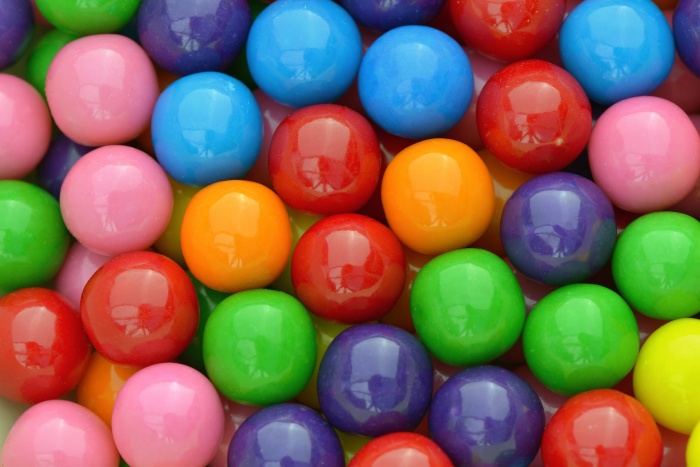By Judy Pister
A common question that we receive at the COR is about a product that is not even meant to be eaten: chewing gum. Does it need to be kosher?
The answer is, yes. And here is why…
History
Gum chewing has been around for thousands of years. What looked like a piece of chewing gum made of birch bark, with tooth marks, probably a few thousand years old, was found in Finland in the 1980’s.
Forms of chewing gums were also used in Ancient Greece where they chewed mastic gum, made from the resin of the mastic tree, Pistacia lentiscus or a small evergreen tree. The Hebrew name for chewing gum is in fact, mastic! People from many different parts of the world have chewed a sticky gum-like object over the centuries.
At first, modern chewing gum was made from latex sap of the sapodilla tree that grows in Central America, called chicle. That is where the name “Chiclets” for one of the first gum products came from.
In the 1860’s, chicle was planned to be a rubber replacement but when that failed, it was used as a gum base along with beeswax or paraffin. After WWII, chemists learned to make a synthetic rubber to replace most natural rubber in chewing gum in order to reduce the cost.
In addition to the gum base, chewing gum contains sweeteners, flavorings and softeners. Softeners are ingredients such as glycerin that are used to blend the other ingredients and help prevent gum from hardening. Chewing gum that hardens quickly is no fun at all!
What is in Gum?
Today, in most cases, the base used to make gum is a synthetic man-made substitute for the sap of different rubber trees. Natural gum bases like chicle do still exist. There are very few chicle trees around and it takes years to produce a very small amount of chicle so it is just too expensive to use it for gum.
Most modern chewing gum bases use synthetic rubbers with long names such as butadiene-styrene rubber, polyethylene and polyvinyl acetate. Sometimes a small amount of natural latex is mixed in with this.
After the gum base, the biggest ingredient in chewing gum is sugar or sweetener. Then flavor is mixed in. Interestingly, while the flavour of a stick of spearmint gum is quite strong, the flavor ingredient is the tiniest amount.
Mint flavors such as spearmint and peppermint are made from plant oils. When fruit flavors are added, they are usually artificial. No real strawberries, grapes or cherries are used.
Finally preservatives such as butylated hydroxytoluene and softeners like glycerin are added to keep the gum fresh, soft, and moist. Some manufacturers may also add fillers such as calcium carbonate and corn starch.
To summarize, a gum recipe consists of: a bit of latex (the rubbery part), lots of sugar (sweetness), a bit of flavour (mint, fruity), some softener (we don’t want to chew hard gum) and some extra filler to complete the package.
How is Gum Made?
Whether natural or synthetic gum base is used (or a combination of the two), it is first ground into a coarse meal, mixed and hot air dried for a day or more.
Next the gum base is cooked at around 115°C until it melts into a thick syrup. Then it is filtered a few times to purify the mixture.
The filtered product is further cooked as sugars, flavorings and softeners are added. The smooth mixture is rolled out and air cooled. This is followed by kneading and final flattening to the desired thickness.
It is finely dusted with sugar to prevent sticking and add some flavor and then scored and stored in a temperature controlled room. This gives the gum its consistency and freshness.
At this point, to make gum pieces, the gum flavors are added and the gum is broken. They are then tumbled while spray coated and then cooled. For gum sticks, the sheets are cut and wrapped.
How do you Make Gum Kosher?
The two things we must look at when making kosher gum are:
1) What is the process?
2) What are the ingredients?
In terms of the process, heat is used at high temperatures during the production and as a result, a mashgiach must make sure that if the facility produces non-kosher products, the area where the kosher gum is made is properly cleaned and koshered. Kosher ingredients on a non-kosher production line can quickly lose their kosher status.
In terms of the ingredients, here are the main components that need to be examined:
1. Oils
2. Glycerin
3. Emulsifiers and flavours
4. Stearic acid and Stearates
Any oil used to keep the gum fresh, soft and moist, must be certified kosher.
Glycerin is the gum base softener, the essential ingredient in chewing gum and it usually comes from an animal. That’s right, non-kosher gum usually contains animal fat!
Even though we (usually) do not swallow chewing gum, it does need to be kosher because:
· it contains flavoring that we do swallow
· it is considered a food because we enjoy it
If the gum or resin is left in its original form without adding glycerin, it will harden and be impossible to make, or even chew. Glycerin is used both in the gum base and also if gums are harvested from trees. So even if vegetable glycerin ingredient is used, an animal product may have been used in the process. That needs checking too!
Making chewing gum from either man-made or natural rubbers (that’s the chicle) makes emulsifiers a necessary ingredient; making the gum softer and more fun to chew. These emulsifiers must come from vegetables for kosher gum use – yes there are some emulsifiers that are of animal origin.
Flavours whether natural or synthetic must be kosher certified. Here again the ingredients and process must be verified.
Stearic acid is the final ingredient used to keep all of the other ingredients together so the gum becomes smooth and does not crumble up in your mouth. Since stearic acid can come from animals, a vegetable one must be used for kosher production.
So as you can now see, the answer to the question, “does gum really need to be kosher certified” is a definite “yes.”
We hope we didn’t burst your bubble.
Judy Pister is an Executive Assistant and New-Client Representative at the Kashruth Council of Canada (COR).

